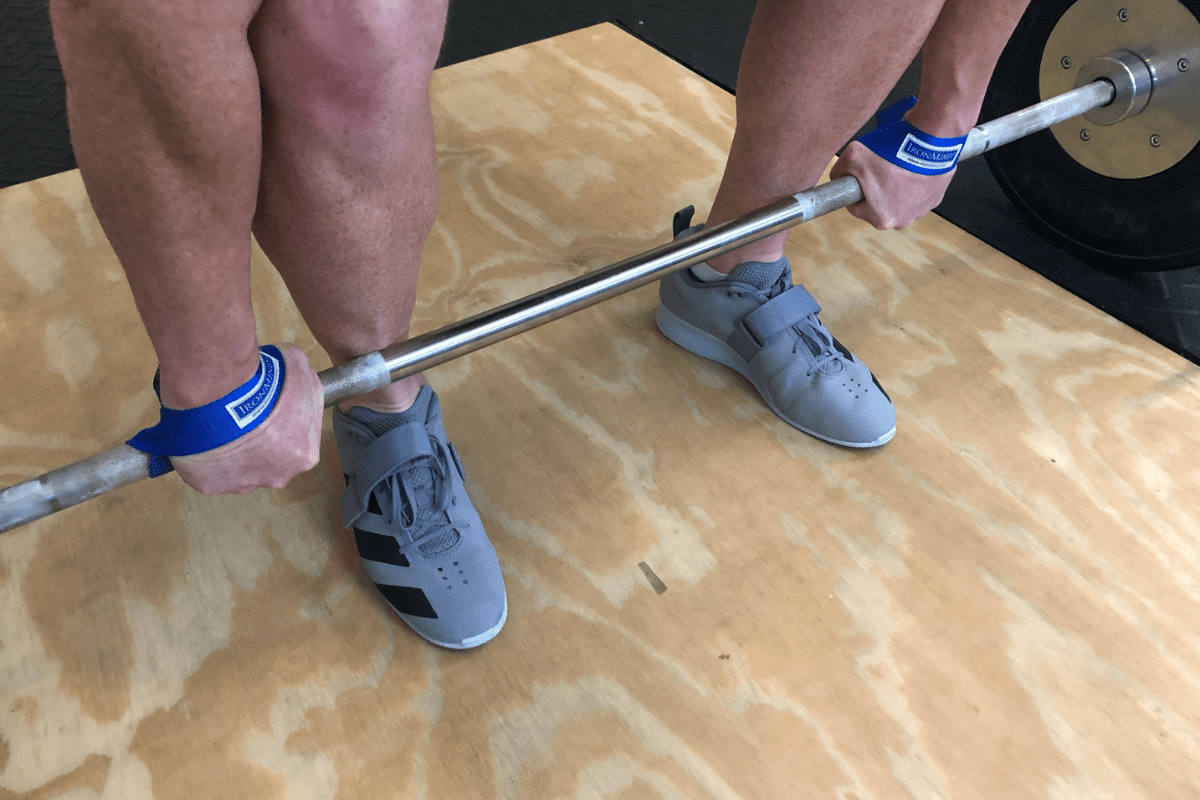The Best Lifting Straps for Weightlifting (My Top 3 Picks!)
If we’re going to talk about the best lifting straps for weightlifting, the first thing we have to do is make sure we’re on the same page about what ‘weightlifting’ is. When I say weightlifting, I’m not merely talking about lifting weights, I’m referring specifically to Olympic weightlifting.
I’ve been a Collegiate Strength Coach for two decades and have been Olympic lifting even longer. I’ve bought and tried over a dozen different pairs of weightlifting straps and, in this article, I’m going to share which are my favorites and why.
And, in case you’re relatively new to weightlifting straps, I’ll explain why you should consider using straps (if you’re not already), how to use them and when to use straps.
Why Trust My Reviews? I’ve spent 20 years as a collegiate sports performance coach and have been lifting personally even longer. I’ve bought and used equipment for both 14,000 square foot weight rooms and for my own garage gym. Finally, I only review products I’ve personally tested.
This article contains affiliate links, meaning if you click and buy I may receive a small commission.
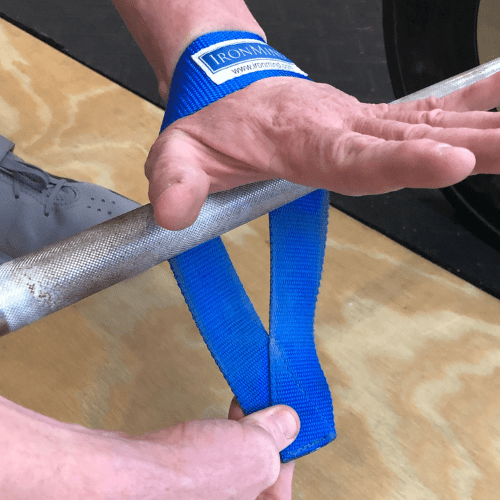
IronMind Sew Easy Straps
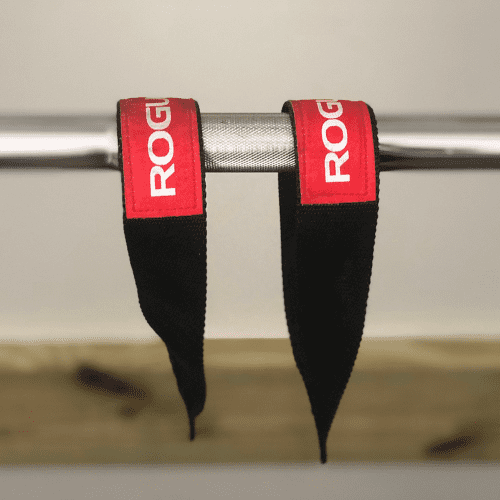
Rogue Olympic Lifting Straps
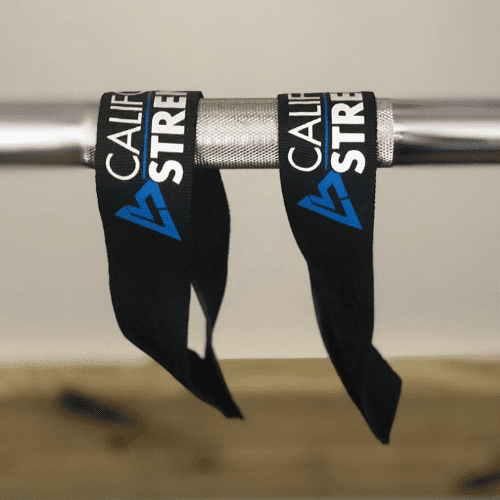
Cal Strength Olympic Lifting Straps
Best Lifting Straps for Weightlifting
I’ve been buying and using lifting straps for years. Whether it was bulk orders for the school I was working at, or the almost 10 different pairs I’ve used personally over the years, these are the 3 that I’ve liked the best to use for weightlifting.
IronMind Sew Easy Closed Loop
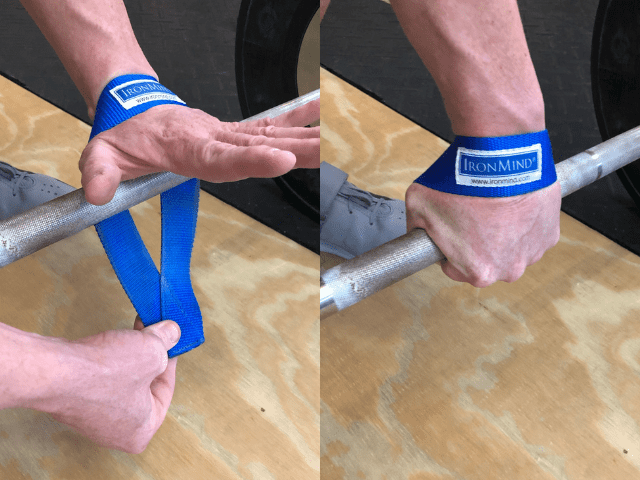
Initially, these Sew Easy lifting straps from Iron Mind seemed like way too much material. They felt bulky and and too stiff trying to tighten down on the bar. I almost tossed these to the side after two sets. That’s how much I didn’t care for them straight out of the box.
I needed to give them a fair review though, so I used them for a few more sessions. I’m really glad I did too. After about a week they started growing on me. Once I started to break them in and they started to take shape, I started loving them.
There is a reason why they feel so bulky, especially right at first. They are a HEAVY duty nylon lifting strap and double-stitched to create a closed loop.
Perhaps the thing I like most about the Sew Easy straps is that the material is super grippy. Once you get your loop through and twist tight you really feel locked into the bar. Even on higher reps sets, I never feel the grip on the bar slip or loosen at all.
They also don’t drive the inside of my hand into the bar when I’m gripped out wide for snatches. Maybe it’s just me, but straps tend to get way tighter towards the inside when I snatch grip and it’s borderline painful. These straps stay evenly distributed.
For what it’s worth, after testing out about a half dozen lifting straps, the Sew Easy Straps from IronMind are the ones I’ll be predominantly using going forward.
Update: I’ve been using these Sew Easy Lifting Straps now for over a year. I’m still loving them. They are, by far, the most durable lifting straps I’ve ever used. If you specifically need a pair of Olympic lifting straps then I can’t recommend these enough.
Rogue Olympic Lifting Straps
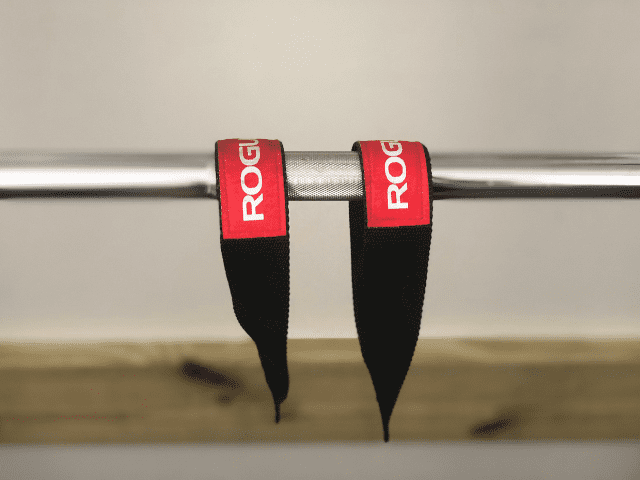
The first thing I appreciated about the Rogue Lifting Straps right away was that they were delivered already folded over in the package. This gives them an immediate curve in the material that makes it easier to work the strap around the bar straight out of the package. This speeds up the ‘break-in’ process tremendously.
They are made from durable cotton webbing with a reinforced sewn edge to prevent fraying. You can tell immediately that these lifting straps are made with quality materials and are built to last.
Overall, the Rogue Lifting Straps feel like the ‘happy medium’ lifting strap. They’re not the thinnest, widest, bulkiest, stiffest, longest, shortest, etc. They seem to fall right in the middle of almost every category.
It’s the kind of strap that even if it’s not your favorite, you’ll have no hesitation in using them.
If you’re not exactly sure what you want out of a closed-loop strap, these Rogue Straps might be the perfect pair to start with.
They are very well made and work great. After you use these straps for a few months you may get a feel for what you might prefer more out of a strap. Or, you might decide they’re the lifting straps you can use for the next decade.
Cal Strength Lifting Straps
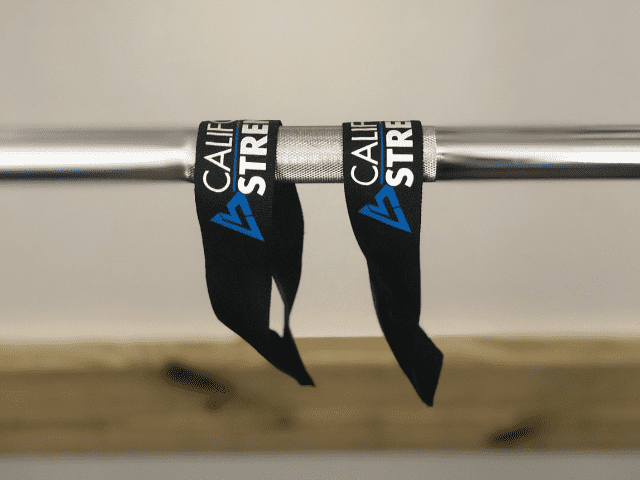
My initial impression of the Cal Strength lifting straps was overwhelmingly positive. The straps are a bit shorter and super thin. While thin, they didn’t feel cheap at all – I think these straps would hold up for a long time (in fact, I still use them occasionally and after a year they still look flawless).
I was trying these straps after using the much bulkier IronMind straps so the difference in thickness was even more striking.
I did have one issue with these straps that I didn’t with the IronMind or Rogue.
The main issue that I kept having was that the strap itself didn’t feel super grippy to the bar. When I would twist to tighten down to get a secure grip, the strap seemed to want to slide and loosen back up.
I think this is by design though and probably comes down to personal preference. Cal Strength mentions right on their website that these lifting straps are designed to be super thin and give ‘an enhanced bar feel and connection’.
If you want a pair of lifting straps that are super thin, yet durable and you’re just looking for a little extra grip to protect your hands then these could work great for you.
However, if you want something that’s going to lock you in on the bar I would recommend going with one of the other two.
Weightlifting Straps FAQ
Here are answers to a few of the questions I get asked most often when it comes to lifting straps.
Why No Lasso Lifting Straps or Open Loop Straps?
As you’ve probably already noticed, all three straps I chose are closed-loop straps. A closed loop strap is a lifting strap that is looped unto itself and then stitched together to form a permanent, fixed loop.
However, closed-loop straps aren’t the only type of strap that you can use for weightlifting. I have friends who use both lasso lifting straps and open loop straps and love them.
The reason I prefer closed loop straps is because, in my opinion, they’re the best to be able to easily set up and lock into the bar as well as easily release when needed on a failed rep.
Lasso straps can be used effectively if you only loop the strap around the bar once. Looping around more than once like you would for a deadlift or shrugs can cause the bar not to release from your grip on a missed rep. This can be catastrophic if you miss a snatch behind and can’t get your hands quickly off the bar.
Open loop straps, which if you’re not familiar are just the bare bones straps themselves, are just really, really hard to get the hang of if I’m being completely honest. Getting your second hand setup after the first hand is already locked in is crazy difficult.
If I worked at using them more would I eventually get much better at using them? Sure, I think so. But, what’s the point when I can just use a closed-loop strap and avoid the headaches? With that being said I’m sure there are some open loop purists that are probably mocking me right now, but I’m okay with that.
How To Use Lifting Straps
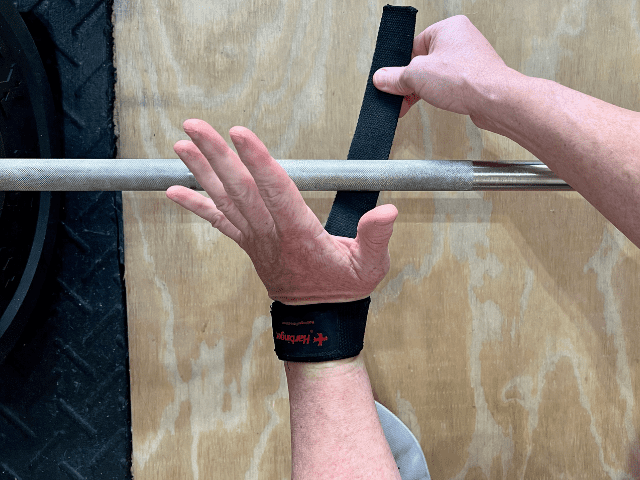
My biggest piece of advice for how to use lifting straps if you’re just getting started is to make sure to wrap the strap under the bar first, around the bar and then back into your palm.
The biggest mistake beginners make when using straps is to go over the bar first. If you do that, the bar will just roll right out of your hand. That’s because the strap works to counter the natural roll the bar wants to make when you’re using a pronated grip.
Other than that, make sure the strap is tight and secure against your wrist.
Finally, give yourself a little bit of time to get the feel of how the lifting straps work best for you. How you set up on the bar, and the amount of tightness on the bar that works best for you – are all things that you’ll develop over time. Don’t stress if they feel ‘quite right’ straight away.
When to Use Straps for Weightlifting
If you’re using lifting straps for weightlifting, there are two situations when you’ll want to utilize them.
First, is to be able to move a little more weight. Most of us (but not all) can pull a little more weight if we’re strapped into the bar.
Grip is an extremely important factor in how much you can clean and snatch. Straps can dramatically increase your grip strength on the bar. Therefore, straps can help allow you to hit weights a little above what you would normally be able to do.
Now, if lifting straps allow you to do A LOT more weight than without, then you may want to seriously look at improving your natural grip strength.
The second situation where you’ll want to use lifting straps is to help save your hands from a large amount of pulling volume.
Olympic weightlifting involves a lot of snatching, cleaning, pulls and rows. These movements all stress the grip and with enough volume can absolutely shred your hands.
Lifting straps can take some of that stress off your hands and can save your hands from getting ripped up. This is especially true if you’re lifting in a garage in the summer heat as I do for much of the year.
I like using straps for many of my accessory lifts like pulls, RDLs and rows. I’ll also use them occasionally with my snatches, depending upon the cycle and emphasis that day.
Final Thoughts
In my opinion, closed-loop straps are the best type of lifting strap to use for weightlifting.
They give the lifter the ability to both easily lock into the bar and just as easily be able to release from the bar when necessary.
I’ve used a ton of lifting straps are the years and I think one of these three will be a great addition to your gym bag.
Hope you found this helpful. Stay Strong!

